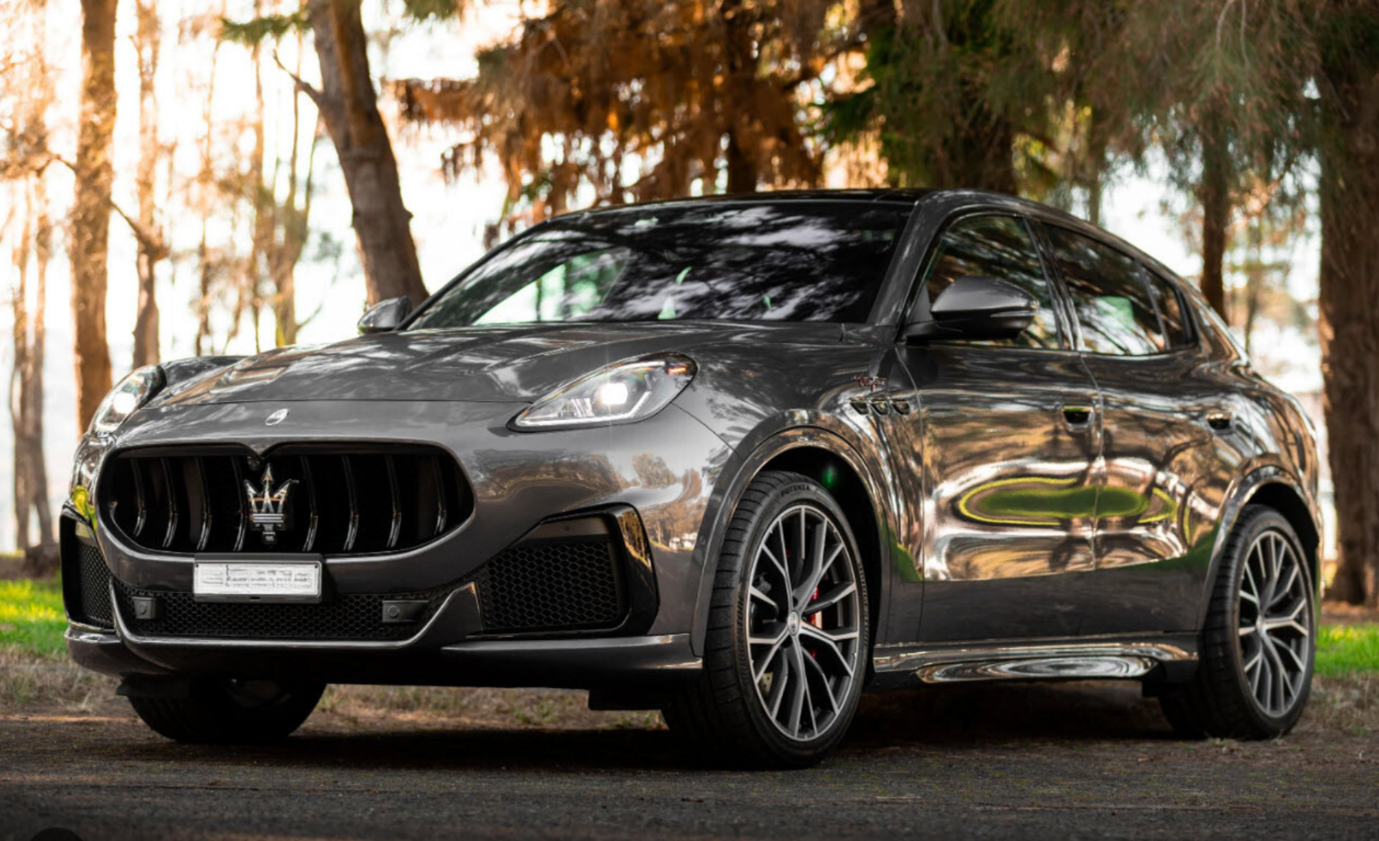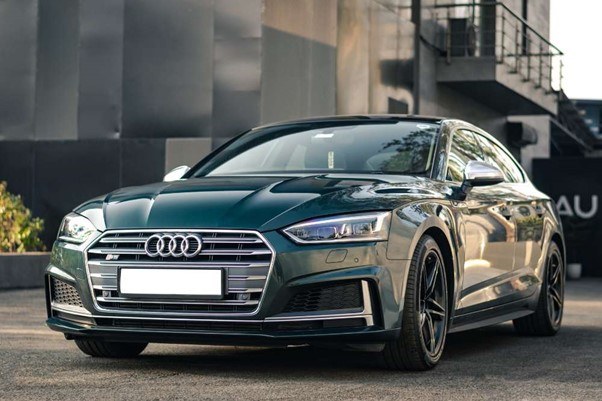For many Australians, the dream of owning a high-end vehicle comes with a hidden cost: the Luxury Car Tax (LCT). This unique Australian tax can significantly affect the final price of your desired car.
This guide explores the ins and outs of LCT to help you understand its impact. If you're eyeing a luxury, fuel-efficient car, keep reading!
What's the Luxury Car Tax (LCT)?
LCT is a special tax on cars whose GST-inclusive value exceeds a certain threshold, known as the "luxury car tax threshold." The Australian Taxation Office (ATO) enforces this tax to create a fair market, ensuring imported luxury cars aren't priced unfairly lower than locally made vehicles.
Though initially meant to protect Australia's car manufacturing industry, LCT has stuck around even after local car production stopped. It now serves to generate revenue and encourage interest in more affordable and often greener vehicles.

Getting to Grips with Luxury Car Tax Thresholds
When looking at luxury cars in Australia, it's crucial to understand LCT thresholds. These government-set benchmarks determine if your car purchase will incur LCT. Any car valued above this threshold is subject to the tax.
The government updates these thresholds yearly, considering factors like inflation and market changes. Once your car's price (excluding GST) goes over this threshold, the LCT rate applies. This rate, usually a percentage of the car's value above the threshold, is the extra amount you'll pay on top of the car's price.
How is LCT calculated? It's applied to the amount by which the car's value exceeds the threshold, not the entire car's value. For example, if a car costs $10,000 above the threshold and the LCT rate is 33%, you'd pay an additional $3,300 in tax.
Smart luxury car buyers keep an eye on these thresholds and rates when planning their purchase. Being informed helps you make better financial decisions and understand the real cost of owning a luxury car in Australia.
Current Luxury Car Tax Thresholds
If you import or sell a car with a GST-inclusive value above the LCT thresholds, you must pay luxury car tax, with some exceptions. Generally, the LCT value includes any parts, accessories, or attachments supplied or imported with the car.
LCT also determines if an electric vehicle qualifies for the Fringe Benefits Tax (FBT) exemption. Here are the LCT thresholds for recent financial years, as per the ATO:
| Financial Year | LCT Threshold (Fuel Efficient Vehicles) | LCT Threshold (Other Vehicles) |
| 2024-25 | $91,387 | $80,567 |
| 2023-24 | $89,332 | $76,950 |
| 2022-23 | $84,916 | $71,849 |
| 2021-22 | $79,659 | $69,152 |
| 2020-21 | $77,565 | $68,740 |
Depreciation Calculation Limits for Cars
There's a limit on the cost you can use to calculate depreciation for passenger vehicles (except motorcycles or similar vehicles) designed to carry less than one tonne and fewer than 9 passengers.
The maximum value for your claim is the car limit (regardless of any trade-in amount) in the year you first used or leased the car.
| Financial Year | Car Limit | Max. Claimable GST | ATO Reference |
| 2024-25 | $69,674 | $6,334 | Indexation factor: 1.023 (445.7 / 435.5) |
| 2023-24 | $68,108 | $6,192 | Indexation factor: 1.052 (435.5 / 413.8) |
| 2022-23 | $64,741 | $5,886 | Indexation factor: 1.066 (413.8 / 388.1) |
| 2021-22 | $60,733 | $5,521 | Indexation factor: 1.027 (388.1 / 377.9) |
| 2020-21 | $59,136 | $5,376 | Indexation factor: 1.027 (377.9 / 368.1) |
Which Cars Pay Luxury Car Tax?
Not all expensive cars are subject to LCT. The tax mainly applies to passenger vehicles, meaning certain types like trucks or vans are usually exempt. Also, cars over two years old when imported to Australia don't incur LCT.
How LCT Affects Car Prices
LCT can significantly increase the price of luxury cars in Australia. For instance, a car priced at $100,000 might end up costing $110,000 or more after LCT is applied. This extra cost can influence buying decisions, potentially steering some buyers towards more affordable options.
Strategies to Manage LCT Costs
While LCT is unavoidable for many luxury car buyers, there are ways to manage its impact:
- Consider fuel-efficient vehicles: These have a higher LCT threshold, potentially reducing your tax liability.
- Look at cars just under the threshold: You might find high-quality vehicles that don't incur LCT.
- Explore novated leasing: This can offer tax benefits that may offset some of the LCT costs.
- Buy used luxury cars: Vehicles over two years old when imported don't incur LCT.
The Future of LCT in Australia
As Australia moves towards more sustainable transport options, there's ongoing debate about the role of LCT. Some argue it should be adjusted to encourage the adoption of electric and hybrid vehicles, while others believe it should be phased out entirely.

Making an Informed Decision
When considering a luxury car purchase in Australia, it's crucial to factor in LCT. This tax can significantly affect the overall cost of your vehicle, and understanding its implications can help you make a more informed decision.
Remember, while LCT adds to the cost of luxury vehicles, it's just one factor to consider. The joy of driving your dream car, the advanced features and performance of luxury vehicles, and potential resale value are all important considerations.
By understanding LCT and its impact, you can approach your luxury car purchase with confidence, knowing you've considered all the financial implications. Whether you decide to embrace the luxury car market or opt for a more modest vehicle, being well-informed about LCT ensures you're making the best decision for your circumstances.
Many luxury brands, from Audi to Mercedes-Benz, often have models that exceed the LCT threshold. Yet, certain cases, like cars used mainly for tourism, may affect whether LCT applies.
A key advantage for those going green is that EV owners can currently avoid paying fringe benefits tax (FBT) on their cars if the luxury car tax was never due on the car's import or sale, among other factors.
Tips to Reduce Luxury Car Tax
Buying a luxury car in Australia offers the appeal of status and a better driving experience. However, the extra cost of luxury car tax (LCT) can often lessen the thrill of a new purchase. But don't worry! There are ways you can use to possibly lower the impact of this tax.
Choose Fuel-Efficient Luxury Cars: To promote greener choices, the Australian government has set a higher LCT threshold for fuel-efficient cars. By picking a luxury car in this group, you can enjoy a higher tax-free limit, potentially cutting the total tax you need to pay.
Import Luxury Cars: While importing luxury cars might seem costly, it could sometimes work out cheaper. In some cases, luxury cars, even with import costs, end up less expensive than those sold locally. By carefully choosing and importing a luxury car, you might find the total cost, even with LCT, is less than buying the same or similar model in Australia.
Commercial Vehicles Exemption: LCT doesn't apply to all vehicle types equally. Some commercial vehicles, even if luxurious, are exempt from this tax. If you're looking for a luxury vehicle mainly for business use, like high-end utes or vans, you might be able to avoid the LCT.
Know the Limits: It may seem obvious, but being fully aware of the luxury car tax thresholds can help. Sometimes, negotiating a price just under the LCT threshold can save you a lot of money.
Trade-ins and Discounts: When working out LCT, trade-ins and manufacturer discounts can lower the total taxable value of your luxury vehicle. If you're trading in an old car or can get a big discount, the reduced value might bring the car's price below the LCT threshold.
While luxury car tax is a reality for Australian luxury car fans, with careful planning and informed choices, there are ways to manage this extra cost. Whether you go for fuel-efficient luxury cars, explore imported luxury cars, or consider luxury commercial vehicles, there are options to minimize the financial burden of LCT.
Manage All Car Costs Effectively with Alliance Leasing
While dealing with LCT might seem tough, Alliance is here to make it easier. Known for providing quality novated leases, Alliance can guide you through the financial aspects of getting your dream car, ensuring you get the most value for your money.
To start the process of getting your next luxury car, contact us today and learn more about how you can save.

